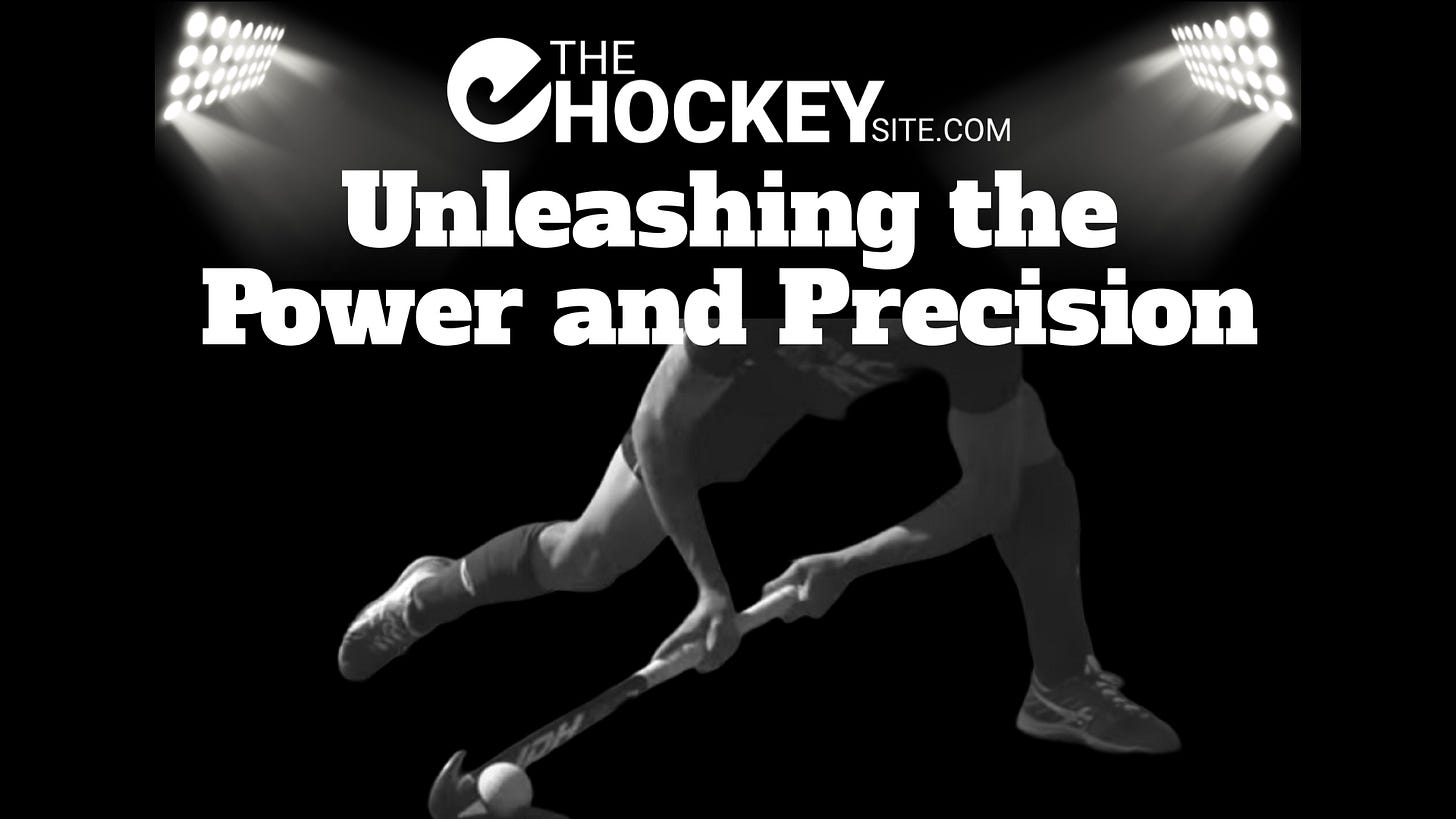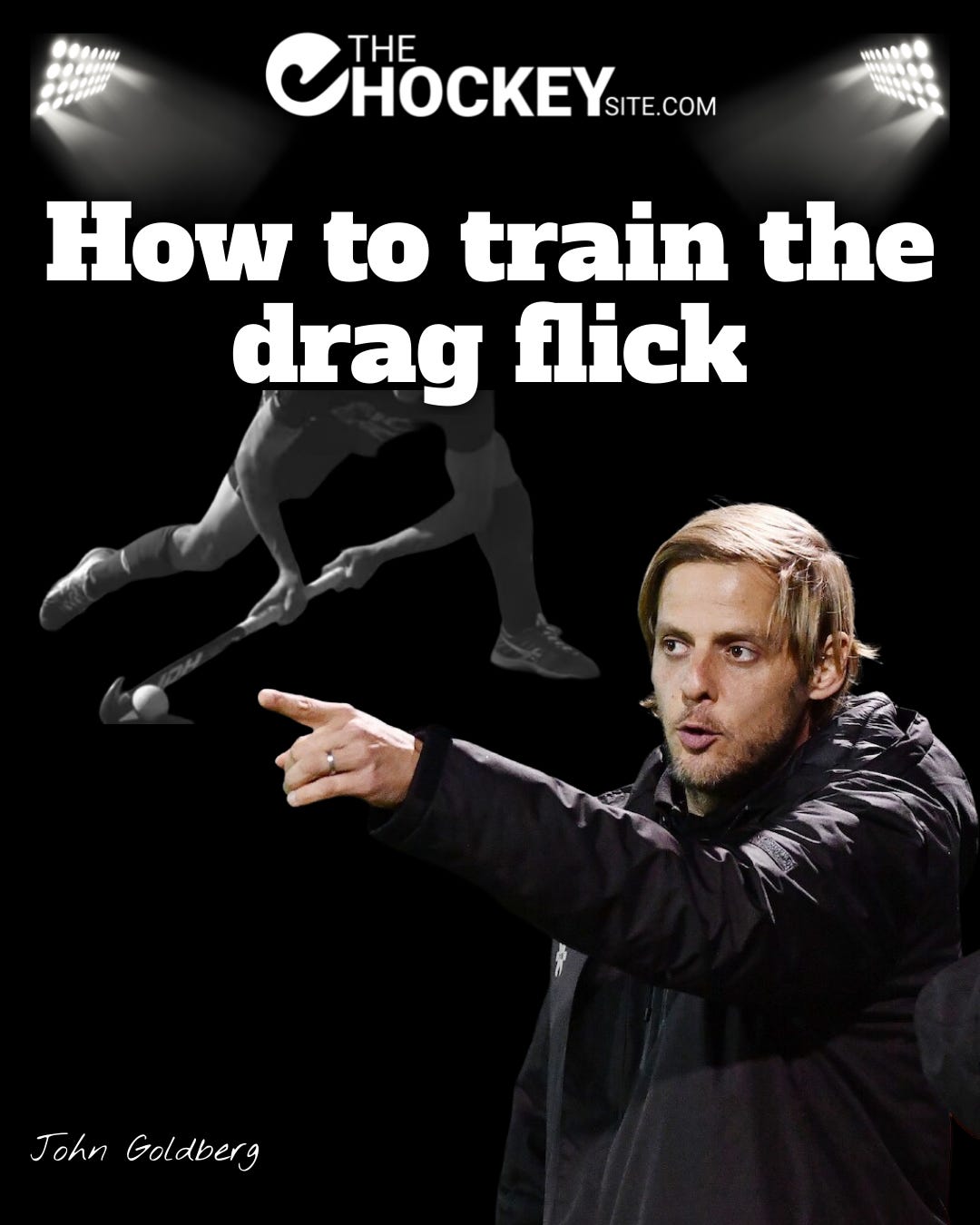Unleashing the Power and Precision: Coaching the Field Hockey Drag Flick
Below 10 minutes to read up on a bit of science combined with some experience before in a few weeks we talk about training it on pitch
The drag flick. Just the name conjures images of blistering speed and pinpoint accuracy, the ultimate weapon in a penalty corner situation. It’s a skill that can turn the tide of a game, and as a coach, you’re constantly looking for ways to help your players master this crucial technique. But how do you move beyond generic advice and tap into the science behind a truly effective drag flick?
While there might not be a single magic drill, understanding the biomechanics and expert opinions surrounding this skill can significantly enhance your coaching approach. This post dives into some key takeaways from recent research, offering insights from a thesis specifically focused on the biomechanics of the field hockey drag flick. Some perspectives from conference papers and reviews discussing its kinematic structure and biomechanical analysis… As well as two videos from people with the on field experience. These insights can help you guide your players toward a better drag flick.
What the Experts Say: Building a Foundation for Success
Before even stepping onto the field, it's valuable to know what experienced coaches consider the cornerstones of a successful drag flick. A recent study involved interviewing and surveying expert field hockey coaches to identify the key attributes. Their consensus highlighted a blend of technical, physical, and even psychological factors:
Technical Prowess is Paramount: Unsurprisingly, technical skills topped the list, with 18 agreed attributes. Coaches emphasized elements like the approach to the ball, the crucial timing of ball pickup with the trapper, the positioning of the right foot (often involving a cross-over step), the length and timing of the drag itself, and the release of the ball. Think about breaking down the drag flick into these sequential parts in your training sessions.
Physical Attributes Provide the Engine: It's not just about technique; the body needs to be capable too. Coaches agreed on eight key physiological attributes, including upper and lower body strength, core stability, explosive leg power, and flexibility. Consider incorporating exercises that build these specific physical qualities into your overall training program.
The Mental Edge Matters: While fewer in number, psychological attributes like mental toughness and the ability to focus were also deemed important. Don't underestimate the role of mental preparation and concentration in executing a high-pressure drag flick.
Interestingly, while coaches reached a strong consensus on these 28 attributes, they didn't agree on a single overall performance criterion. Some prioritized accuracy, while others leaned towards velocity. This highlights a crucial point for your coaching: the "best" drag flick might depend on the specific game situation and your team's overall strategy. Expert coaches identified accuracy, speed, and disguise as different performance criteria. But in the end of course it’s all about… did you score or not.
Unveiling the Core Movement
Research also delves into the actual movement patterns of the drag flick, aiming to identify a core movement strategy. This isn't about forcing every player into an identical mold, but rather understanding the fundamental, invariant elements that underpin an effective drag flick.
Think of it like learning to throw a ball – there are core mechanics everyone uses, but individual styles will emerge. Studies using motion analysis have shed light on these core elements:
The Cross-Over Step: Setting the Stage: The cross-over step, where the right foot moves in front of the ball before pickup, is consistently highlighted as a key component. This allows players to position their body effectively for a longer drag and generate greater angular velocity in the hips and shoulders. Ensure your players understand the purpose and proper execution of this step.
A Wide Stance: Creating a Stable Base: A wider stance during the drag provides a stable base of support, allowing for better body rotation and power transfer. Coach your players to find a comfortable yet effective stance width that allows them to generate force.
The Drag Itself: Maximizing Contact: The dragging motion, where the ball stays in contact with the stick for as long as possible, is crucial for building velocity and accuracy. Focus on drills that emphasize maintaining contact and guiding the ball along the stick.
Body Rotation: Power from the Core: The sequential rotation of the pelvis and upper trunk is a significant contributor to ball speed. Encourage movements that engage the core and facilitate a smooth transfer of power from the lower body to the stick. The twisting of the right leg, shoulder girdle, arms, and stick while balanced on the left leg helps maintain balance in the final phase.
Wrist Action: The Final Flourish: While perhaps not always explicitly emphasized by coaches, research suggests that the flexion and extension of the wrists play a role throughout the drag flick, particularly at release, influencing accuracy and velocity. Pay attention to your players' wrist action and how it might be optimized.
Accuracy Versus Velocity: A Coaching Conundrum
As the expert coaches indicated, the debate between prioritizing accuracy or velocity continues. Interestingly, research suggests that players actually adapt their movement patterns depending on the task constraint. When the focus is on accuracy, players might employ a more "push-like" motion or a combination of pushing and throwing. Conversely, when velocity is the primary goal, the proximal-to-distal sequencing of body segments (power starting from the hips and moving outwards) becomes more pronounced.
This has significant implications for your training:
Train Both Qualities: Don't solely focus on one aspect. Design sessions that specifically emphasize accuracy to different target areas as well as some that aim to maximize ball speed while maintaining a reasonable level of accuracy.
Contextualize Training: In training scenarios, clearly communicate the primary objective – is it hitting a specific corner or unleashing maximum power? This will encourage players to adapt their technique accordingly.
Target Practice Matters: Incorporate target practice that focuses on the specific zones you think have a higher success rate. The placement of the shot is particularly important, often coinciding with the support of the left foot during execution.
The Importance of Phased Training
Another way to break down the drag flick for training is to consider its distinct phases:
Approach: This involves the run-up to the ball. Experts highlighted the importance of timing and the ability to adapt the approach based on where the ball is stopped. While lab-based studies might not always capture this, in live practice, emphasize adjusting the number of steps and timing to ensure a smooth setup.
Stick Contact/Ball Pickup: This is the moment of initial contact and bringing the ball onto the stick. Key elements include the position of the right foot relative to the ball and the lateral distance of the ball from the body.
Drag: This is the phase where maximum acceleration is imparted to the ball. Focus here on the length of the drag, the rotation of the body, and maintaining contact. Maximum length and acceleration during this execution step are crucial for increasing the force impulse.
Follow-Through: The motion after releasing the ball is important for stability and can influence the trajectory. Stick velocity at release is a strong predictor of ball velocity. Maintaining balance after ball separation is also key.
By addressing each of these phases in your unopposed training drills, you can help players develop a more holistic understanding and execution of the drag flick. First master the skill in an unopposed setting before moving on beating the PCD or Penalty Corner Defense.
Visualisation: A Powerful Coaching Tool
Understanding the complex movements of a drag flick can be challenging. Research suggests that visual representations of the core movement strategy can significantly aid communication between coaches, athletes, and even sports scientists. Consider using video analysis, slow-motion replays, and even diagrams to help your players visualize the key body positions and the sequence of movements involved in an effective drag flick. Visualizations of principal movements derived from biomechanical analysis can also be valuable.
Embracing Individual Styles
While there's a core movement strategy, remember that individual players will develop their own unique styles. Encourage experimentation within the fundamental principles and avoid forcing players into rigid techniques. Your role is to guide them towards an efficient and powerful technique while allowing their individual strengths to shine.
The Ongoing Quest for Knowledge
The biomechanics of the drag flick is a continuously evolving field. New research is constantly refining our understanding of this complex skill. Encourage a culture of learning and adaptation within your team. Stay informed about the latest findings and be willing to adjust your coaching methods based on evidence-based insights. The thesis itself, mentioned below, aimed to enhance the understanding of the drag flick technique, particularly the core movement strategy.
Final Thoughts
Coaching the drag flick effectively involves more than just telling players to flick the ball hard. By understanding the underlying biomechanics, the expert consensus on key attributes, and the interplay between accuracy and velocity, you can provide more targeted and effective guidance. Break down the technique into phases, emphasize the core movement strategy, and utilize visualization tools. Remember to train both accuracy and velocity, and allow for individual stylistic variations. By embracing a science-informed approach, you can help your players unlock their drag flick potential and become a formidable force on the penalty corner.
Subscribe here ↑ and on our YouTube channel to make sure you know when we get some new masterclasses or workshops coming your way about the drag flick
Some of the sources behind this article were:
Thesis by Kirstie Grace about the biomechanics of the field hockey drag flick ( a doctoral thesis for Leeds Becket University)
Article by Rajinikumar Palaniappan (Dept. of Sports Biomechanics and Kinesiology, TNPES University, Chennai, India) and Viswanath Sundar (Centre of Biomechanics & Performance analysis, National Sports Institute, Kuala Lumpur, Malaysia) about the biomechanical analysis of the penalty corner drag flick in field hockey
Article by Antonio Antonov from the National Sports Aacdemy in Bulgaria for the Trakia Journal of Sciences about the kinematic structure and characteristics of the drag flick
Youtube video about strength training to improve you hockey drag flick
Youtube video by Jeroen Hertzberger about how to drag flick
Share your thoughts with your fellow coaches and leave a comment…
But even better join us when we go live on Friday 2025-05-30 with John Goldberg, drag flick coach for the national women’s team of Belgium, to talk about how to train the drag flick ↓






Super useful breakdown for training the drag-flick